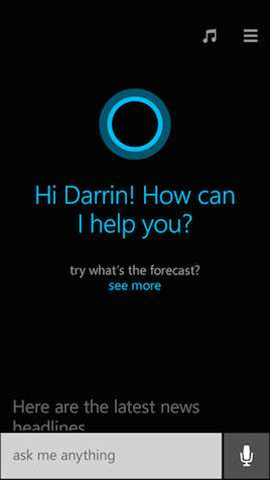Microsoft has backtracked on several radical design changes in its current version of Windows, revealing plans to bring the operating system back to more familiar territory for users.
Key changes in the free Windows 8.1 update, announced today at its Build 2014 developer event and which will be available for users next week, are aimed at responding to criticisms from users finding the migration to the radically different user interface difficult and cumbersome.
While not scheduled for the immediate update, Microsoft also revealed a feature missed by many users migrating from earlier versions of Windows, the Start Menu, will make a come back in a future version of the operating system.
A mock-up of the Start Menu was shown to the Build 2014 audience, along with the ability to run Modern or Metro apps in windowed mode. Microsoft did not say when either feature would appear.
Source: @JustinAngel
In the current update, however, close and minimise buttons for mouse and keyboard users have been added to Windows Store apps, while right-clicking on tiles now pops up context menus. Non-touch desktops and laptops will also boot straight to desktop mode.
Windows Store and desktop apps as well as website bookmarks can all now be pinned to the taskbar.
Microsoft vice president Joe Belfiore said the changes were "customer driven" and admitted most Windows 8 and 8.1 users spent the majority of time in desktop mode, not in the Modern or Metro tiled interface optimised for touch screens.
Enterprise customers get improved Internet Explorer 8 compatibility in IE11, improved mobile device management features as well as easier deployment.
Microsoft has also made the Windows 8.1 update run on low-cost machines with as little as 1GB or RAM and 16GB disk space, to enable hardware partners build cheap notebooks and tablets.
Windows will be free - for phones and tablets
Microsoft announced it will provide Windows for free to smartphone and tablet manufacturers in an effort to catch up with Google's Android and Apple's iOS operating systems.
Today, Windows Phone devices and Windows tablets are minnows in a market dominated by Google and Apple, with a just a few percent share respectively.
As part of a refresh that Microsoft hopes will boost its popularity among mobile device customers and developers, Belfiore announced the next version of the Windows Phone operating system, Windows Phone 8.1.
Windows Phone 8.1 comes with several new features, including the voice controlled Cortana digital assistant.

Cortana is named after a female character in Microsoft's Halo video game, and is aimed as a competitor to Apple's Siri for iOS.
Microsoft said Cortana can interact with third-party Windows Phone apps such Skype, Hulu Plus, Facebook and Twitter, all of which can be controlled via voice commands.
Microsoft also touted easier development of applications for different types of devices running Windows.
Developers will be able to build apps for all devices running Windows with the new Visual Studio 2013 update 2.
Some 90 percent of code can be shared among universal Windows apps, and there is now a single packaging system for deployment.
New Nokia Windows Phones
Although Microsoft's acquisition of Nokia has yet to be finalised, the Finnish mobile device maker's chief executive and new Microsoft devices boss Stephen Elop took the stage to announce three new devices.
These include the low-end Lumia 630 single and dual-SIM card phones, and the Lumia 635, which will sell for US$159, US$169 and US$189 respectively. The phones are built around 1.2GHz quad-core Qualcomm Snapdragon 400 processors and have 512MB of RAM and 8GB of internal storage.
A new range-topping Windows Phone, the Lumia 930, was also introduced by Elop.
It features a 2.2GHz quad-core Qualcomm Snapdragon 800 processor, 2GB of RAM and 32GB of internal storage and a 5 inch, 1920 x 1080 resolution screen with 441 pixels per inch density.
Nokia is continuing its focus on high-quality photography and videos in mobile devices with the Lumia 930, which features a 20 megapixel Pureview camera with a Carl Zeiss lens and optical image stabilisation.
The Lumia 930 also offers four microphones for surround or directional stereo sound recording.
An earlier version of this story said Microsoft would introduce the Start Menu and windowed apps in the Windows 8.1 Update. We apologise for the error.








_(11).jpg&h=142&w=230&c=1&s=1)




.jpg&w=100&c=1&s=0)
_(8).jpg&w=100&c=1&s=0)









